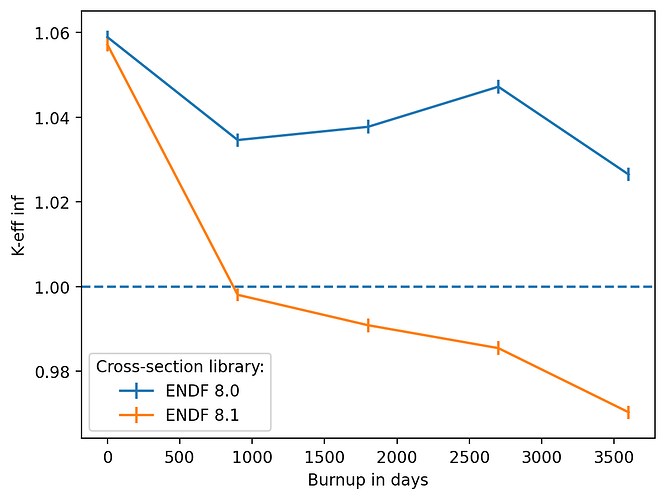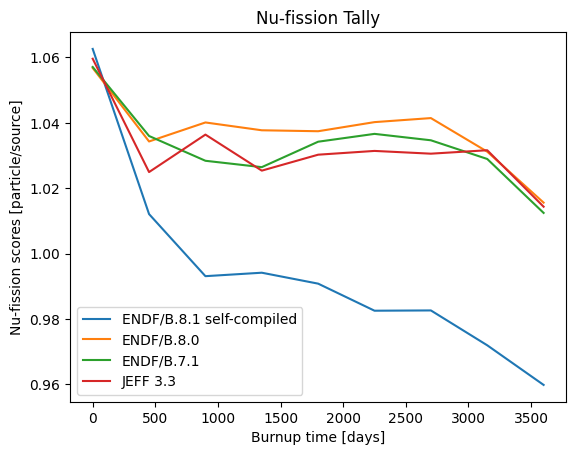Greetings everybody, nice to meet you all!
I was doing a pin-cell depletion simulations, whose geometries follow AP1000 specification. The fuel is consisted of ThO2, U233 oxide, and some Pa231 oxide. First I used the cross-sections and depletion chains libraries provided by openmc.org, but then I downloaded myself the latest ENDF 8.1 library and installed NJOY 2016.78, and then converted them to the cross-sections hdf5 library using openmc.Data and njoy.
I then ran the same simulation with the freshly-compiled ENDF 8.1 library while reusing the previously used depletion chain xml file. To minimized uncertainties I use CF4 algorithm with timestep=90 days, settings.particles=5000, and 150 batches with 20 inactives.
For the library compilation I followed [the documentation]. (3. Data Configuration — OpenMC Documentation). I also compile the S(\alpha,\beta) data for H in H2O from ENDF’s thermal_scatt sublibrary (it’s 2.6gb, so big…).
This is the k-eff for 3600 days:
I know that different cross-sections data will lead to different result, but is the results above normal? It’s almost as if ENDF-B 8.1 has nothing to do with 8.0, I fear I made a mistake in my assumptions or procedure.
Thank you!
Edit: I forgot to mention, the light water temperature is 600K, clad temp is 621K, and fuel temp is 900K. Because O16 data for the thermal scatter law is not defined to 600K in the official data, I used settings.temperature = {‘method’ : ‘interpolation’, ‘tolerance’ : 300}




















